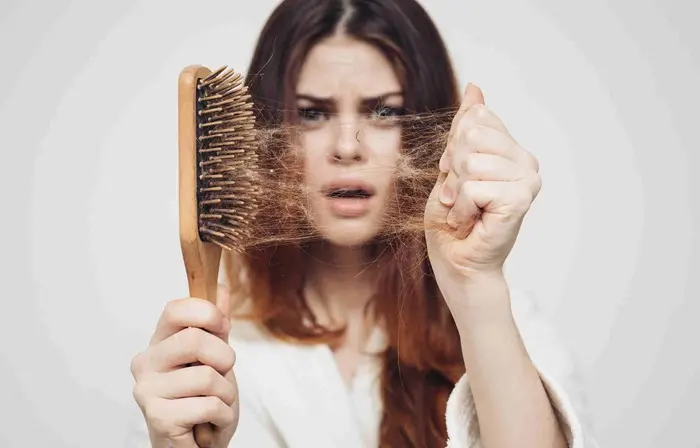Hair transplant surgery is a significant step toward addressing hair loss and restoring confidence. Post-operative care is crucial to ensure the best possible results. This article outlines comprehensive post-operative care instructions, tips, and best practices for patients who have undergone hair transplant surgery.
Immediate Post-Surgery Care
Rest and Recovery
After the procedure, it is essential to prioritize rest. The first 48 hours are critical for the healing process.
Resting Position: Sleep with your head elevated using pillows to minimize swelling.
Activity Level: Avoid strenuous activities and exercises that may increase blood pressure and cause bleeding.
Managing Pain and Discomfort
It is common to experience mild pain and discomfort post-surgery. Here are some ways to manage it:
Medications: Follow your surgeon’s prescription for pain relief medications.
Cold Compresses: Apply cold compresses to the forehead (not directly on the grafts) to reduce swelling.
Wound Care
Keeping the Area Clean
Maintaining cleanliness around the transplant site is crucial to prevent infection.
Washing: Follow your surgeon’s instructions for washing your hair. Typically, gentle washing can begin 2-3 days post-surgery.
Antibiotics: Use prescribed antibiotic ointments to prevent infection.
Avoiding Irritation
The transplanted area is sensitive and requires careful handling.
Touching: Avoid touching, scratching, or rubbing the grafted area.
Clothing: Wear loose-fitting clothing to avoid friction on the scalp.
See Also: What Is The Most Advanced Hair Transplant Technology?
Nutrition and Hydration
Balanced Diet
A balanced diet can aid the healing process and promote hair growth.
Protein-Rich Foods: Consume foods rich in protein, such as lean meats, fish, eggs, and legumes.
Vitamins and Minerals: Ensure adequate intake of vitamins (A, C, E) and minerals (zinc, iron) to support hair health.
Staying Hydrated
Proper hydration is essential for overall health and recovery.
Water Intake: Drink at least 8 glasses of water daily to stay hydrated.
Avoiding Alcohol: Refrain from consuming alcohol for at least a week post-surgery as it can interfere with the healing process.
Protecting the Transplanted Area
Sun Protection
Exposure to the sun can damage the newly transplanted hair.
Hats and Scarves: Wear a loose hat or scarf to protect the scalp from direct sunlight.
Sunscreen: Use a gentle, non-comedogenic sunscreen on the scalp once the grafts have healed.
Avoiding Heat and Sweat
Heat and sweat can irritate the scalp and affect healing.
Showers: Avoid hot showers and use lukewarm water instead.
Activities: Refrain from activities that cause excessive sweating, such as sauna visits and intense workouts.
Follow-Up Appointments
Regular Check-Ups
Regular follow-up appointments with your surgeon are crucial to monitor progress and address any concerns.
Schedule: Adhere to the follow-up schedule provided by your surgeon.
Updates: Report any unusual symptoms or concerns immediately.
Additional Treatments
Some patients may require additional treatments to optimize results.
Laser Therapy: Low-level laser therapy (LLLT) can stimulate hair growth and improve healing.
PRP Injections: Platelet-rich plasma (PRP) injections may be recommended to enhance hair growth and strengthen hair follicles.
Lifestyle Adjustments
Stress Management
Stress can negatively impact hair growth and overall health.
Relaxation Techniques: Practice relaxation techniques such as meditation, deep breathing, and yoga.
Adequate Sleep: Ensure you get sufficient sleep to support the healing process.
Avoiding Smoking
Smoking can impair blood flow and slow down the healing process.
Quitting Smoking: Consider quitting smoking before and after the surgery to promote better healing and hair growth.
Support: Seek support from smoking cessation programs or consult with your healthcare provider for assistance.
Understanding the Healing Process
Timeline of Healing
Understanding the healing timeline helps manage expectations.
Initial Days: Swelling and mild discomfort are common.
First Week: Scabs form around the grafts, which should not be picked.
2-3 Weeks: The transplanted hair may fall out, known as shock loss, which is normal.
3-6 Months: New hair begins to grow. Patience is key as growth varies among individuals.
12-18 Months: Full results are typically visible within this period.
Managing Expectations
Realistic expectations are crucial for post-surgery satisfaction.
Gradual Growth: Understand that hair growth is gradual and may take up to a year to see the full results.
Variable Results: Individual results may vary based on factors such as age, hair type, and the extent of hair loss.
Potential Complications and How to Address Them
Common Complications
Awareness of potential complications ensures prompt action if they arise.
Infection: Redness, swelling, and pus may indicate an infection.
Bleeding: Persistent bleeding should be reported to your surgeon.
Scarring: Unusual scarring or bumps should be evaluated by a healthcare professional.
When to Seek Medical Attention
Knowing when to seek medical help is crucial for recovery.
Severe Pain: Unmanageable pain that does not respond to medication.
High Fever: A high fever may indicate an infection.
Unusual Symptoms: Any symptoms that seem abnormal or concerning.
Long-Term Care and Maintenance
Hair Care Routine
Adopting a proper hair care routine supports long-term results.
Gentle Products: Use gentle, sulfate-free shampoos and conditioners.
Regular Trims: Regular trims help maintain hair health and appearance.
Continuing Healthy Habits
Maintaining healthy habits promotes overall well-being and hair health.
Balanced Diet: Continue to consume a balanced diet rich in essential nutrients.
Avoiding Harmful Practices: Avoid harsh hair treatments such as chemical coloring and excessive heat styling.
Psychological Support
Addressing Emotional Well-being
Hair loss and recovery can have emotional impacts.
Support Groups: Joining support groups can provide emotional support and shared experiences.
Counseling: Professional counseling may help address any anxiety or stress related to hair loss and recovery.
Celebrating Progress
Celebrate milestones and progress to stay motivated.
Documenting Growth: Take photos to document hair growth progress.
Rewarding Yourself: Reward yourself for following the post-operative care diligently.
Conclusion
Proper post-operative care is essential for achieving the best results after hair transplant surgery. By following these comprehensive guidelines, patients can support their healing process, promote hair growth, and ensure long-term success. Regular follow-up appointments, a balanced diet, proper wound care, and lifestyle adjustments are key to a smooth recovery. Additionally, managing expectations and addressing any complications promptly will help patients achieve the desired outcome and regain their confidence.
Related topics:

